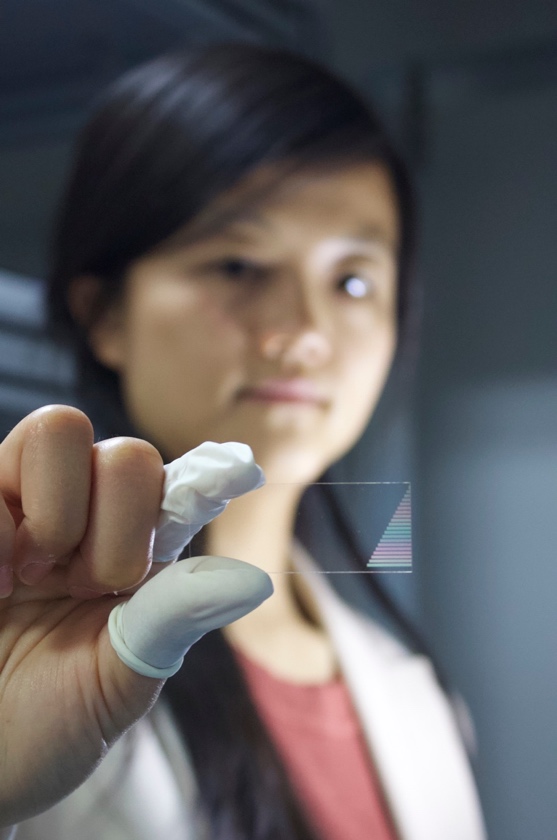On May 11th, the latest research result of a research team led by Jin Xianmin,School of Physics and Astronomy of Shanghai Jiao Tong University has been published on the scientific journal the Science Advances, a sub-journal of the Science, titled "Experimental Two-dimensional Quantum Walk on a Photonic Chip". Their study demonstrated the world's largest-scaled 3D photonic quantum chip anda 2D quantum walk in real spatial space. Meanwhile, it is the first domestic photonic chip. This study provides a powerful platform for further studies on analog quantum computers.
Beyond the sponsor by the major projects of the ShanghaiScience and Technology Committee (STCSM) and the National Natural ScienceFoundation of China, the study has also been supported by the Young overseashigh-level talents introduction plan of the Organization Department of theCentral Committee of the CPC, the national key R&D program, the Shanghai Municipal Education Commission, the High Performance Computing Laboratory (HPCL)at the National University of Defense Technology, the Zhiyuan College of Shanghai Jiao Tong University, and the School of Physics and Astronomy of Shanghai Jiao Tong University.
Quantum walks, in virtue of the coherent superposition and quantum interference, have exponential superiority over their classical counterpart in applications of quantum searching and quantum simulation. The quantum-enhanced power is highly related to the state space of quantum walks,which can be expanded by enlarging the photon number and/or the dimensions ofthe evolution network, but the former is considerably challenging due to probabilistic generation of single photons and multiplicative loss.

We demonstrate a two-dimensional continuous-time quantum walk by using the external geometry of photonic waveguide arrays, rather than theinner degree of freedoms of photons. Using femtosecond laser direct writing, we construct a large-scale three-dimensional structure that forms atwo-dimensional lattice with up to 49 × 49 nodes on a photonic chip. We demonstrate spatial two-dimensional quantum walks using heralded single photons and single photon-level imaging. We analyze the quantum transport properties via observing the ballistic evolution pattern and the variance profile, which agree well with simulation results. We further reveal the transient nature that is the unique feature for quantum walks of beyond one dimension. An architecture that allows a quantum walk to freely evolve in all directions and at a largescale, combining with defect and disorder control, may bring up powerful and versatile quantum walk machines for classically intractable problems.
School of Physics and Astronomy, Shanghai JiaoTong University:
https://www.physics.sjtu.edu.cn/en/about/news/32